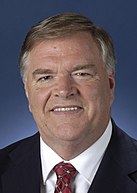Australian general election, 1998
|
|
|||||||||||||||||||||||||||||||||||||
|---|---|---|---|---|---|---|---|---|---|---|---|---|---|---|---|---|---|---|---|---|---|---|---|---|---|---|---|---|---|---|---|---|---|---|---|---|---|
|
|||||||||||||||||||||||||||||||||||||
|
All 148 seats in the Australian House of Representatives 75 seats were needed for a majority in the House 40 (of the 76) seats in the Australian Senate |
|||||||||||||||||||||||||||||||||||||
|
|||||||||||||||||||||||||||||||||||||
|
|||||||||||||||||||||||||||||||||||||
John Howard
Liberal/National coalition
John Howard
Liberal/National coalition
Federal elections were held in Australia on 3 October 1998. All 148 seats in the House of Representatives and 40 seats in the 76-member Senate were up for election. The incumbent Liberal Party of Australia led by Prime Minister of Australia John Howard and coalition partner the National Party of Australia led by Tim Fischer defeated the opposition Australian Labor Party led by Kim Beazley, despite Beazley's Labor Party, polling more votes overall than Howard's Liberal-National Coalition.
Independents: Peter Andren
The election returned the Member of the House of Representatives for its 1998–2001 term and half of Australia's senators, who then served in the 1999–2002 Senate.
Despite winning almost 51 percent of the two-party-preferred vote and regaining much of what it had lost in its severe defeat of two years earlier, Labor fell short of forming government. The government was re-elected with 49.02% of the two-party-preferred vote, compared to 50.98% for the Australian Labor Party, the largest difference of six election results where the winner did not gain a two-party preferred majority, since 2PP results first estimated from 1937.
...
Wikipedia


